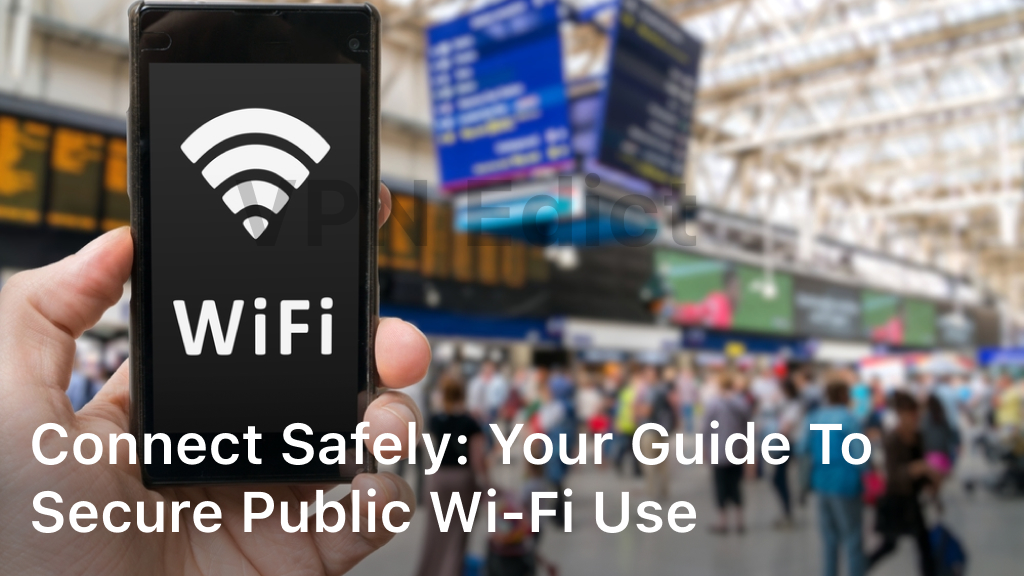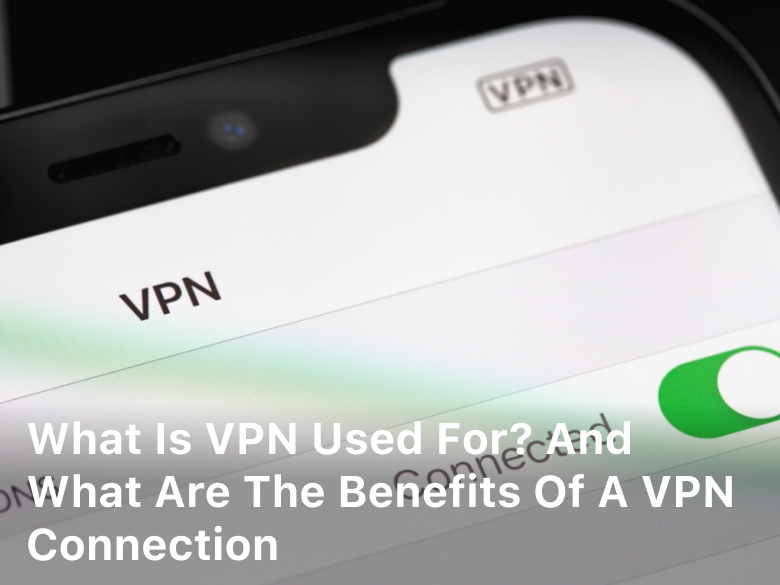Connect Safely: Your Guide to Secure Public Wi-Fi Use
Welcome to our comprehensive guide on how to use Secure Public Wi-Fi networks safely and securely. In today’s fast-paced world, staying connected is essential, and public Wi-Fi networks offer a convenient way to access the internet when on the go.
However, it’s essential to be aware of the potential risks associated with these networks. We’re here to help you understand these risks and provide you with the knowledge and tools to safeguard your online activities.
Our guide will cover everything you need to know about public Wi-Fi networks, from the risks involved to the best practices for ensuring a secure connection.
We will explore topics such as encryption, choosing trusted networks, essential security measures, VPNs, device security, safe browsing practices, public Wi-Fi etiquette, and the importance of monitoring your accounts.
By following our recommendations, you can confidently use public Wi-Fi networks without compromising your privacy or security.
So, let’s get started and dive into the world of public Wi-Fi networks!
The Risks of Secure Public Wi-Fi
As convenient as public Wi-Fi networks may be, they come with inherent risks that one must be aware of. These networks are often unsecured and offer no encryption for the data transmitted over them.
Man-in-the-Middle Attacks
The lack of encryption makes it easy for hackers to intercept data transmitted over public Wi-Fi networks. Hackers can use various techniques to intercept this data, including man-in-the-middle (MITM) attacks, where they position themselves between you and the Wi-Fi router, collecting your personal information, such as login credentials and credit card details.
Malware and Phishing Attacks
Public Wi-Fi networks can also be breeding grounds for malware and phishing attacks. Hackers can infect your device with malware or launch phishing attacks through fake Wi-Fi portals, tricking you into providing personal and sensitive information.
Unsecured Networks
Public Wi-Fi networks are often unsecured, meaning there’s no password required to connect or encryption used to protect the data transmitted over the network. This makes it easier for hackers to infiltrate these networks, intercept your data, and potentially compromise your device.
Being aware of these risks is the first step in protecting yourself when using public Wi-Fi networks. In the next section, we’ll explore how to overcome these risks and ensure a secure connection.
Encryption: Your First Line of Defense
When using public Wi-Fi, encryption is your primary tool to ensure a secure connection. By encrypting your online activities, you can prevent unauthorized access to your sensitive information, such as passwords, credit card details, and personal data.
Encryption works by scrambling your data into an unreadable format that can only be decoded with the correct key. This process ensures that even if someone intercepts your data, they won’t be able to read it without the key.
There are two main types of encryption used on public Wi-Fi: WPA2 encryption and HTTPS encryption. WPA2 encryption is a protocol used to secure Wi-Fi networks, while HTTPS encryption is a security measure used to encrypt data transferred between websites and users.
When connecting to a public Wi-Fi network, it’s crucial to ensure that the network is using WPA2 encryption. This will help prevent unauthorized access to the network and protect your online activities from hackers and cybercriminals.
In addition to using WPA2 encryption, it’s also essential to only browse websites that use HTTPS encryption. When a website uses HTTPS, it encrypts all the data transferred between the website and the user, making it much harder for anyone to intercept and read the data.
In conclusion, encryption is your first line of defense when using public Wi-Fi. By ensuring that the network is using WPA2 encryption and only browsing HTTPS websites, you can enjoy a secure connection and protect your personal information from prying eyes.
Choosing Trusted Networks
When connecting to public Wi-Fi networks, it’s crucial to select trusted networks to ensure a secure connection. Not all public Wi-Fi networks are created equal. Some are secure and well-established, while others may be unsecured and vulnerable to cyber attacks.
Always select networks that you trust when connecting to public Wi-Fi. Consider using networks provided by reputable businesses or organizations. Additionally, look for networks that require a password or other authentication before granting access.
Be wary of networks that have generic or suspicious names, or those that don’t require a password. These networks may be set up by hackers or cybercriminals to steal your personal information. It’s best to avoid these networks and connect only to those that you trust.
Verifying Secure Networks
To ensure a secure connection, it’s essential to verify that the network you’ve connected to is secure. One way to do this is to use a network scanner app that can identify open and secured networks.
Another way is to look for a padlock symbol or HTTPS in the URL of the websites you visit. These are indicators that the network is using encryption to protect your data as it travels between your device and the website’s server.
By taking the necessary precautions and selecting only trusted networks, you can minimize the risks associated with public Wi-Fi and enjoy a more secure online experience.
Essential Security Measures
When connecting to public Wi-Fi networks, it’s essential to take proactive steps to enhance your network security and protect your personal information. Here are some critical security measures you should implement:
Use Strong Passwords
Using a strong and unique password for your devices and online accounts is crucial to prevent unauthorized access. Avoid using easily guessable passwords such as “password123” or “123456789” and instead create complex passwords with a mix of letters, numbers, and symbols. Consider using a password manager to generate and securely store your passwords.
Enable Two-Factor Authentication
Two-factor authentication (2FA) adds an extra layer of security to your accounts by requiring a secondary form of authentication such as a code sent to your phone or email. Enabling 2FA can significantly reduce the risk of unauthorized access to your accounts, even if someone has your password.
Update Your Software Regularly
Keeping your devices’ software up to date is essential to ensure that any security vulnerabilities are patched. Enable automatic updates on your devices whenever possible to ensure that you’re always running the latest software versions.
Turn off Sharing
When connected to public Wi-Fi networks, it’s essential to turn off sharing to prevent others from accessing your files or devices. Make sure to disable file sharing, printer sharing, and network discovery features on your devices.
Use a Firewall
A firewall can help block unauthorized access to your device and prevent malware from communicating with other devices on the network. Enable the firewall on your device or use a reputable third-party firewall software.
VPNs: An Extra Layer of Protection
Virtual Private Networks, or VPNs, are a popular tool for enhancing online security, especially when connected to public Wi-Fi networks. When you connect to a VPN, your internet traffic is encrypted and routed through a secure server, making it much harder for hackers or other malicious actors to intercept or access your data.
There are many VPN services available, and it’s important to choose one that is reliable, secure, and meets your needs. Look for VPN providers that offer strong encryption, a no-logging policy, and support for multiple devices. Additionally, make sure to choose a VPN server that is located in a region where you trust the data privacy laws.
When setting up your VPN, be sure to follow all instructions carefully. This may involve downloading and installing software, configuring network settings, and selecting a server location. Once your VPN is set up, you should see a new network connection icon in your device’s toolbar or system tray.
Remember, while VPNs are an effective tool for enhancing your online security, they are not foolproof. It’s still important to follow best practices and implement other security measures, such as choosing trusted networks, securing your devices, and practicing safe browsing habits.
In short, using a VPN is a smart and effective way to add an extra layer of protection when using public Wi-Fi. By choosing a reputable VPN provider and following best practices for setup and usage, you can enjoy a more secure and private online experience, no matter where you are.
Securing Your Devices

When connecting to public Wi-Fi, it’s essential to ensure the security of your devices to prevent unauthorized access and protect your data. Here are some measures you should take to secure your smartphones, laptops, and other devices:
Update Your Software and Operating System
Keeping your device’s software and operating system up-to-date is critical in maintaining its security. Software updates and patches often include security enhancements and bug fixes, which help protect your device from potential vulnerabilities.
Enable a Strong Password or PIN
Setting a strong password or PIN is an effective way to secure your device and prevent unauthorized access. Avoid using easily guessable passwords, such as your name or birthdate, and use a combination of letters, numbers, and symbols.
Activate Two-Factor Authentication
Two-factor authentication provides an additional layer of security by requiring a second form of identification, such as a fingerprint or a passcode, to access your device. This feature can help prevent unauthorized access, even if someone has your password.
Install Anti-Malware Software
Anti-malware software can help protect your device from various types of malware, including viruses, trojans, and spyware. It’s essential to keep this software updated and perform regular scans to ensure maximum protection.
Disable Automatic Wi-Fi Connections
Automatic Wi-Fi connections can be convenient, but they can also put your security at risk. Hackers can set up fake Wi-Fi networks with similar names to popular public Wi-Fi connections to trick users into connecting to them. To prevent this, disable automatic Wi-Fi connections and manually connect to trusted networks only.
Use a VPN
Using a VPN can provide an additional layer of protection when connected to Secure Public Wi-Fi . A VPN encrypts your data and redirects it through a secure server, making it difficult for hackers to intercept or steal your information. Make sure to choose a trusted VPN provider and set up the VPN correctly to ensure maximum security.
By implementing these measures, you can significantly enhance the security of your devices when connecting to public Wi-Fi networks. Remember, securing your devices is just one step in ensuring a safe and risk-free connection.
Safe Browsing Practices
When using public Wi-Fi, it’s essential to practice safe browsing habits to protect your sensitive information. One crucial way to do this is by ensuring that you only visit secure websites that use HTTPS encryption.
The Importance of HTTPS
HTTP stands for Hypertext Transfer Protocol, which is the standard protocol for transmitting data over the internet. However, HTTP is not secure and can be easily intercepted by hackers. That’s where HTTPS comes in. HTTPS stands for Hypertext Transfer Protocol Secure, and it provides a secure connection by encrypting the data that is transmitted between your device and the website.
When you connect to a website using HTTPS, your data is encrypted, making it difficult for hackers to intercept and steal. To know if a website is using HTTPS encryption, look for the padlock icon in the address bar of your browser, and make sure the website’s URL starts with “https://” instead of “http://”.
Identifying Secure Websites
Not all websites use encryption, so it’s crucial to know how to identify secure websites when browsing on public Wi-Fi. Look for websites that use HTTPS encryption and have a valid SSL certificate, which confirms that the website is genuine and not an imposter site set up by hackers to steal your information.
Another useful tool is the Electronic Frontier Foundation’s HTTPS Everywhere extension, which automatically encrypts your connection to many major websites and ensures that you always use a secure connection when available.
Other Safe Browsing Practices
In addition to using HTTPS encryption, there are other safe browsing practices you should follow when using public Wi-Fi. These include:
- Avoiding clicking on pop-up ads or suspicious links
- Not entering sensitive information like passwords or credit card numbers on unsecured websites
- Logging out of all accounts when you finish browsing
- Using a reputable antivirus program to protect you from malware or viruses
By following these safe browsing practices, you can significantly reduce the risks of identity theft, fraud, and other online threats when using public Wi-Fi.
Public Wi-Fi Etiquette: Being a Respectful User
When using public Wi-Fi, it’s crucial to remember that you’re sharing the network with other people. To ensure a positive experience for everyone involved, we all need to practice proper public Wi-Fi etiquette. Here are some guidelines to keep in mind:
Be mindful of bandwidth
Public Wi-Fi networks have a limited amount of bandwidth, which means that excessive data usage can slow down the connection for everyone. To be a respectful user, avoid streaming high-definition videos, downloading large files, or engaging in other bandwidth-intensive activities.
Avoid hogging the outlets
If you’re using a laptop or another device that requires charging, be mindful of how long you’re taking up an outlet. Public spaces with Wi-Fi usually have a limited number of outlets available, so don’t use them as your personal charging station.
Respect others’ privacy
When using public Wi-Fi, it’s important to be aware of your surroundings. Be considerate of others and avoid looking at or sharing sensitive information in public areas. Additionally, refrain from peeking over at other users’ screens or otherwise infringing on their privacy.
Don’t monopolize the seating
Public areas with Wi-Fi can get crowded, especially during peak hours. To be a respectful user, avoid taking up more seating or table space than you need. Don’t spread out your belongings or occupy multiple seats if the area is busy and other users need space.
Be patient and courteous
Finally, remember that public Wi-Fi networks can sometimes be slow or unreliable. If you encounter connection issues or other problems, be patient and courteous to those around you. Avoid venting your frustration loudly or taking it out on other users.
By following these guidelines, we can all use public Wi-Fi networks respectfully and ensure an enjoyable experience for everyone involved.
Staying Vigilant: Monitoring Your Accounts
Monitoring your online accounts regularly is crucial to maintain their security, especially when using public Wi-Fi. Hackers can easily access your sensitive information when connected to unsecured networks.
Be sure to frequently check your accounts for any unauthorized activity, such as logins from unknown devices or unusual purchases. Most financial institutions and online services allow you to set up alerts that notify you of any suspicious activity promptly.
Enable Two-Factor Authentication
Two-factor authentication is an excellent way to add an extra layer of security to your online accounts by requiring additional verification, such as a unique code sent to your phone, when logging in.
Enabling two-factor authentication can help prevent unauthorized access to your accounts and alert you to any suspicious logins.
Use Strong Passwords and Change Them Regularly
Using strong, unique passwords for each of your accounts is essential to protect them from being compromised. Avoid using easily guessable passwords, such as ‘123456’ or ‘password.’
We recommend using a password manager to generate and store secure passwords for your accounts. Additionally, changing your passwords regularly can prevent hackers from accessing your accounts even if they have obtained your login information.
Keep Your Software and Devices Up to Date
Keeping your devices and software up to date with the latest security patches and updates can minimize the risk of vulnerabilities that hackers may exploit to gain access to your accounts.
Be sure to enable automatic updates on your devices and regularly check for software updates on your apps and programs.
Conclusion
We hope that this guide has provided you with valuable insights and actionable tips for using public Wi-Fi networks safely and securely. Remember, when it comes to protecting your online security and personal information, vigilance is key. By implementing the best practices outlined in this guide, you can minimize the risks associated with public Wi-Fi and ensure a secure, risk-free connection no matter where you are.
Always prioritize your online security, and take the necessary precautions to protect your sensitive information from potential threats. From encryption to VPNs to safe browsing practices, there are numerous measures you can take to safeguard your online activities. By being mindful of these risks and following the best practices outlined in this guide, you can confidently and securely use public Wi-Fi networks without compromising your security.
Thank you for taking the time to read this guide. We hope that you found it informative and helpful. Stay safe and secure on your next public Wi-Fi adventure!
FAQ
What are the risks of using public Wi-Fi?
When using public Wi-Fi, you are exposed to potential security risks such as malware, data theft, and unauthorized access to your personal information.
How can I ensure a secure connection on public Wi-Fi?
To ensure a secure connection on public Wi-Fi, make sure to connect to encrypted networks, avoid accessing sensitive information, and use a virtual private network (VPN) for an added layer of protection.




